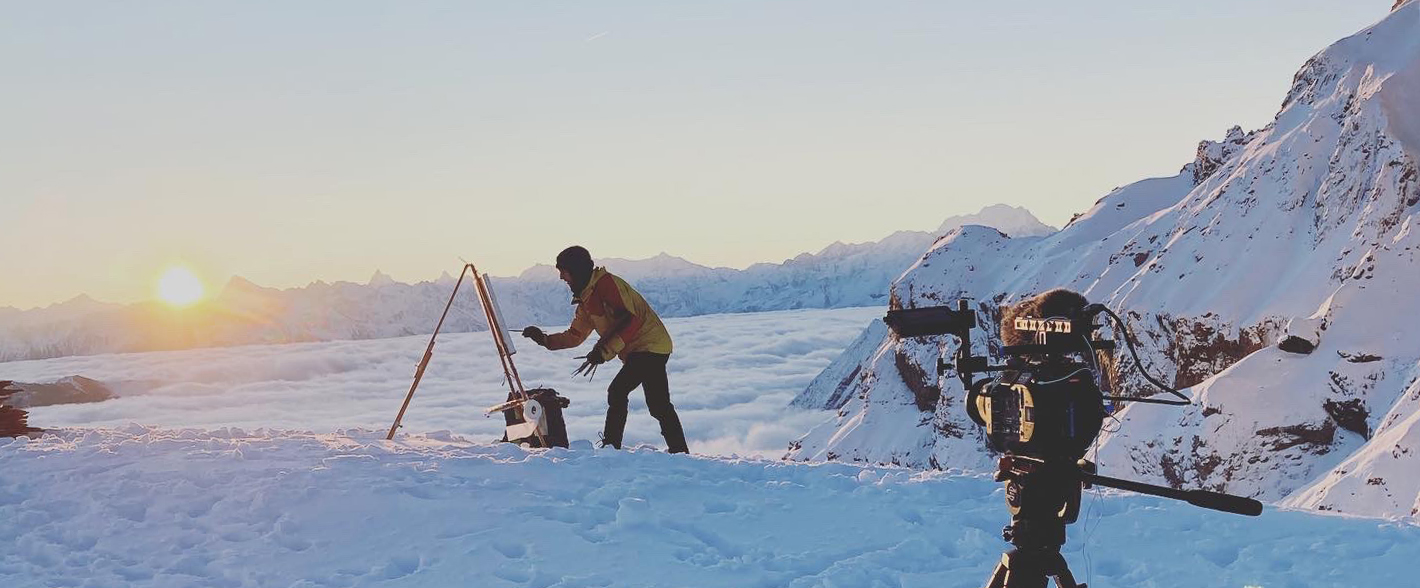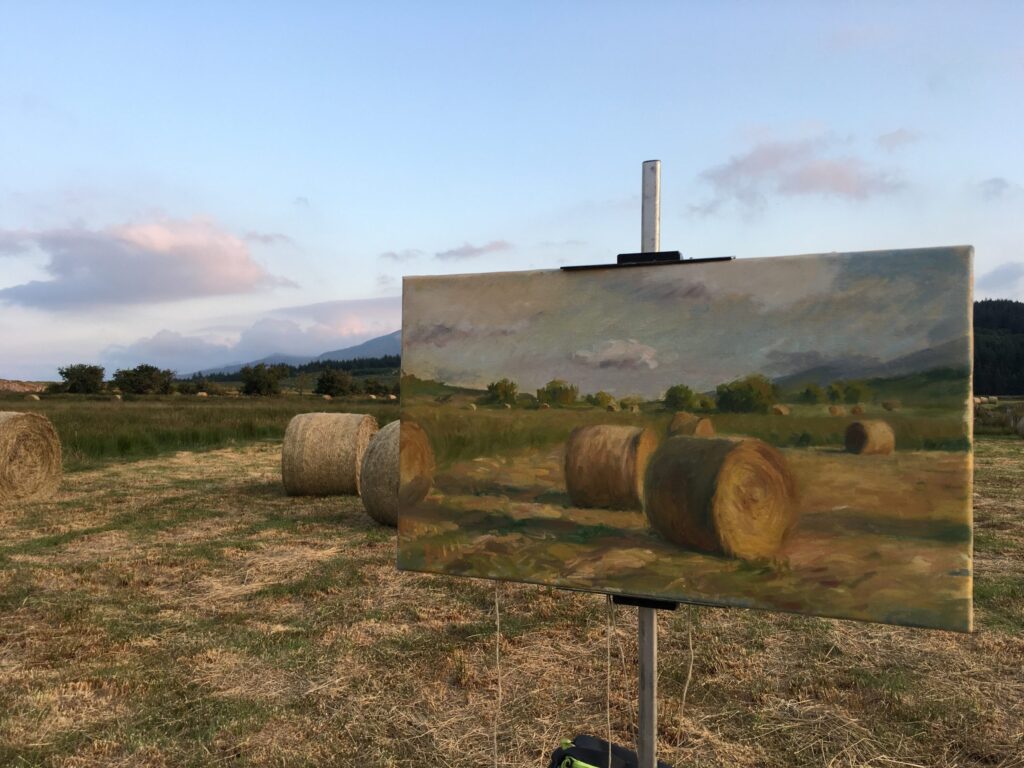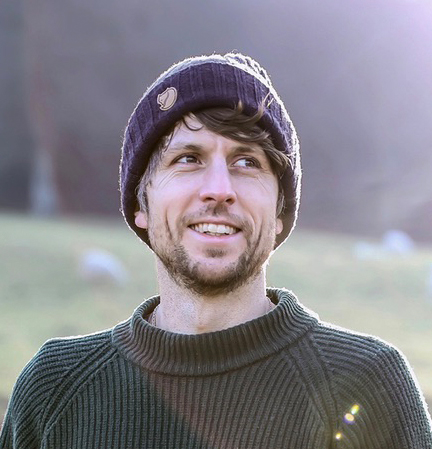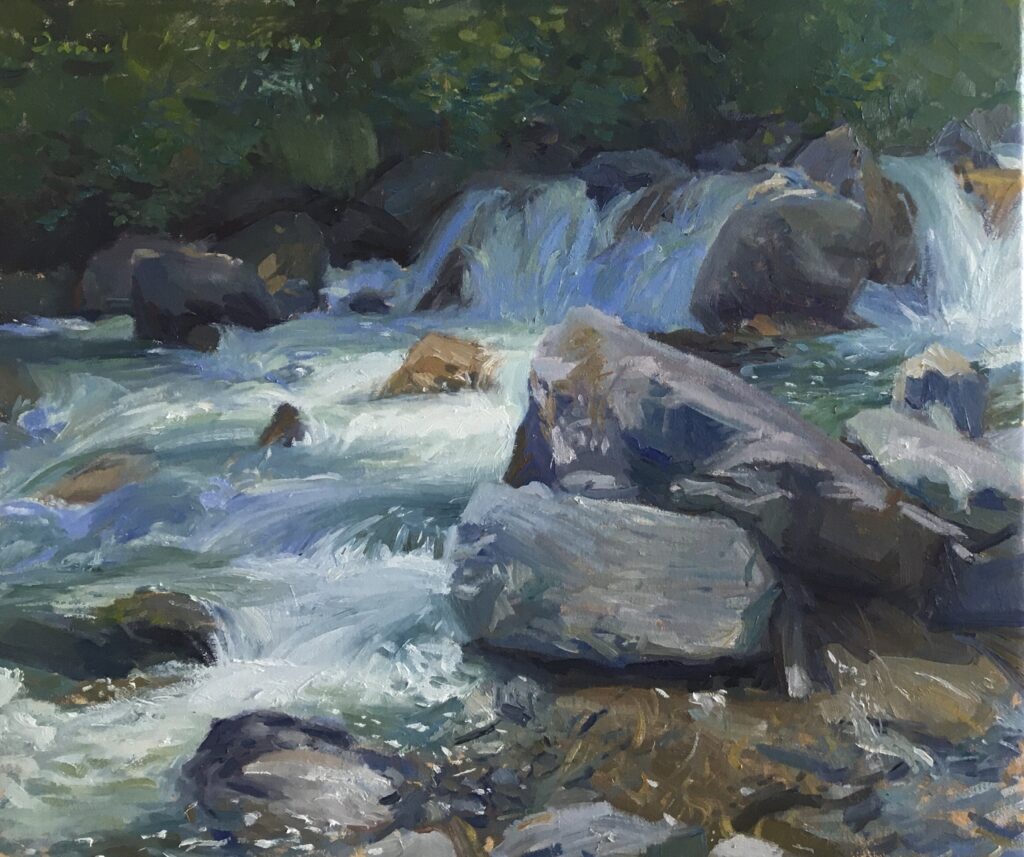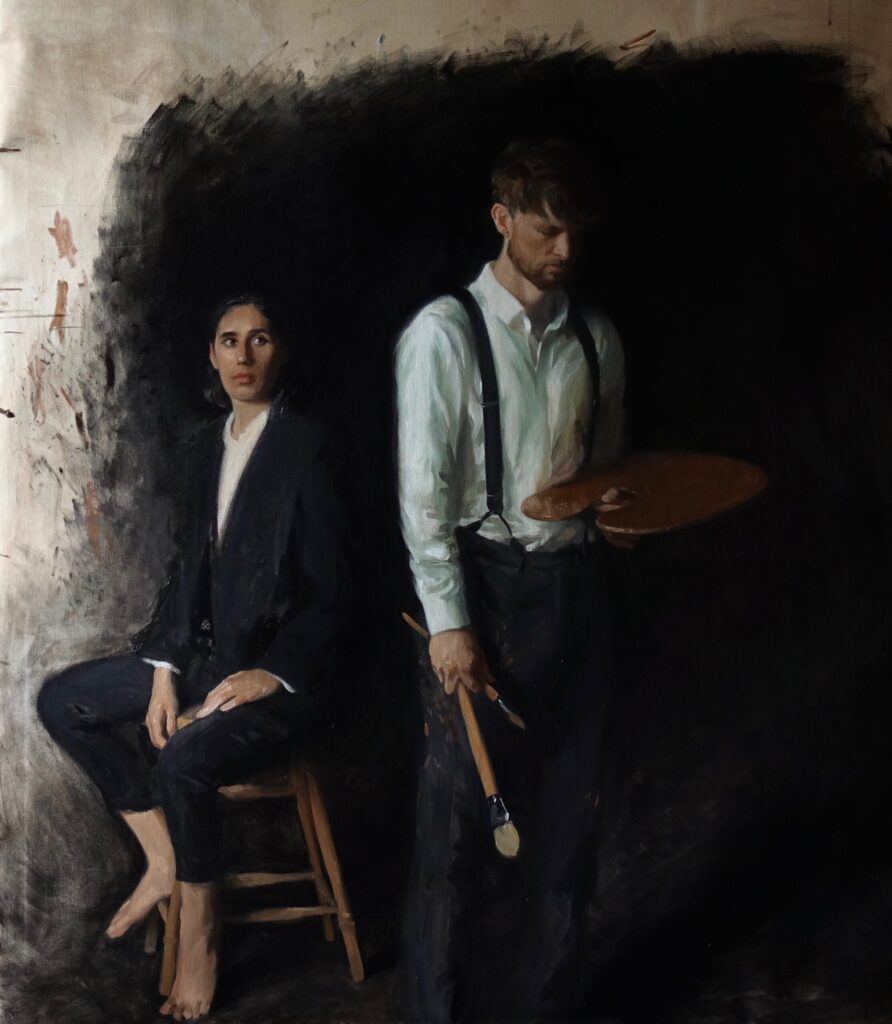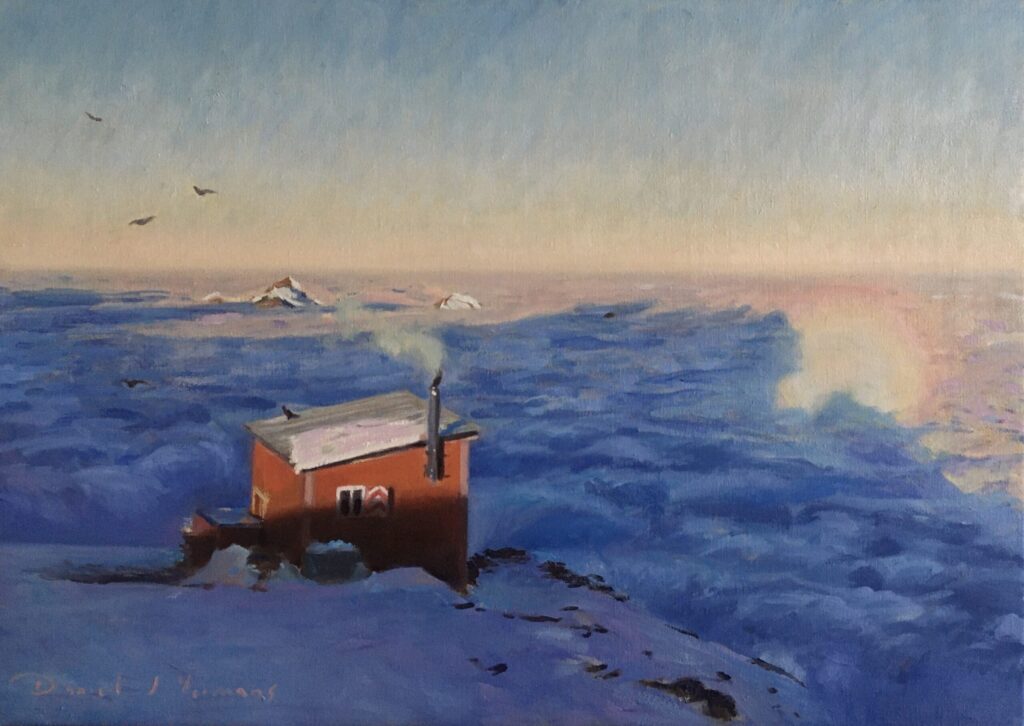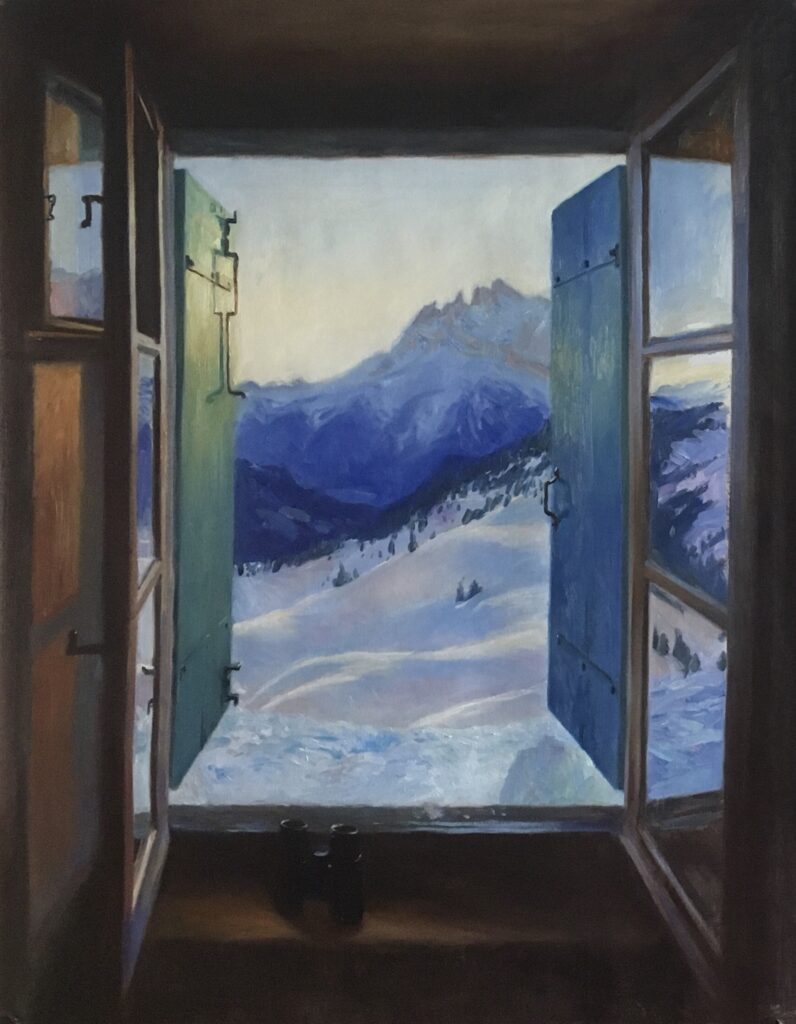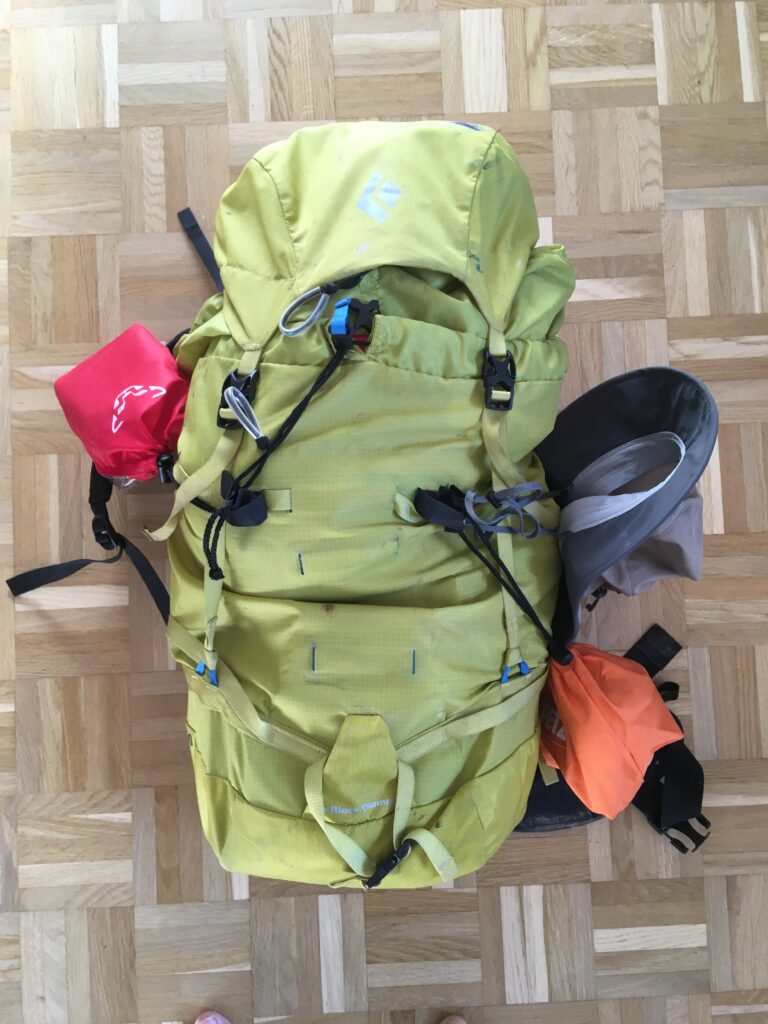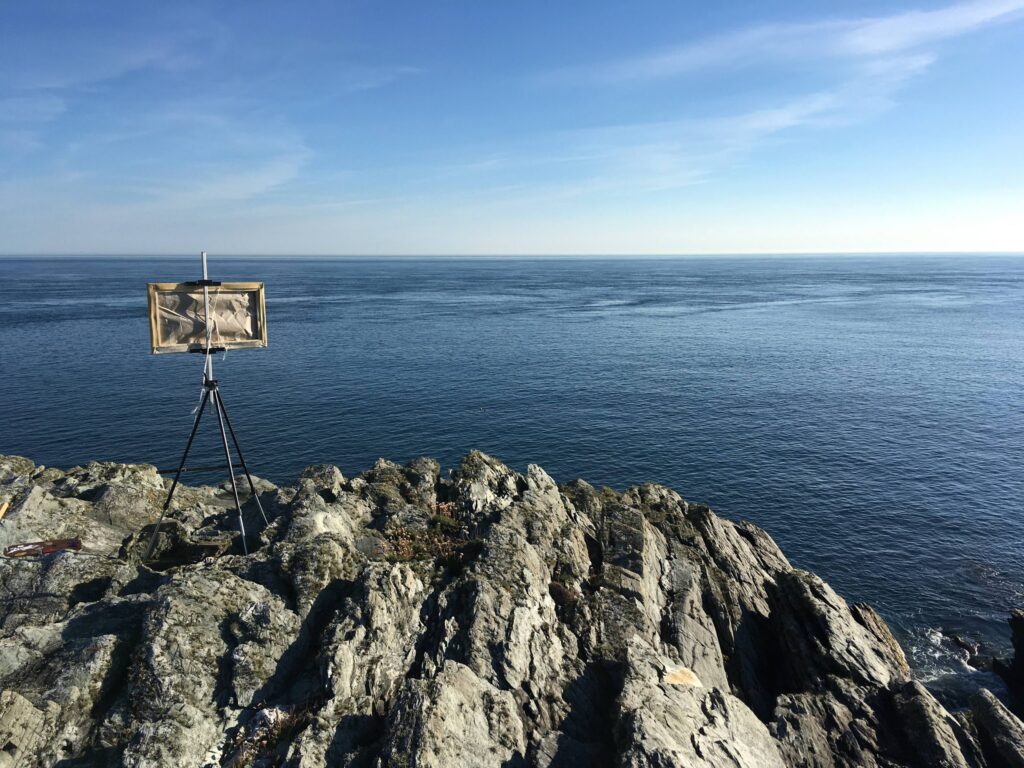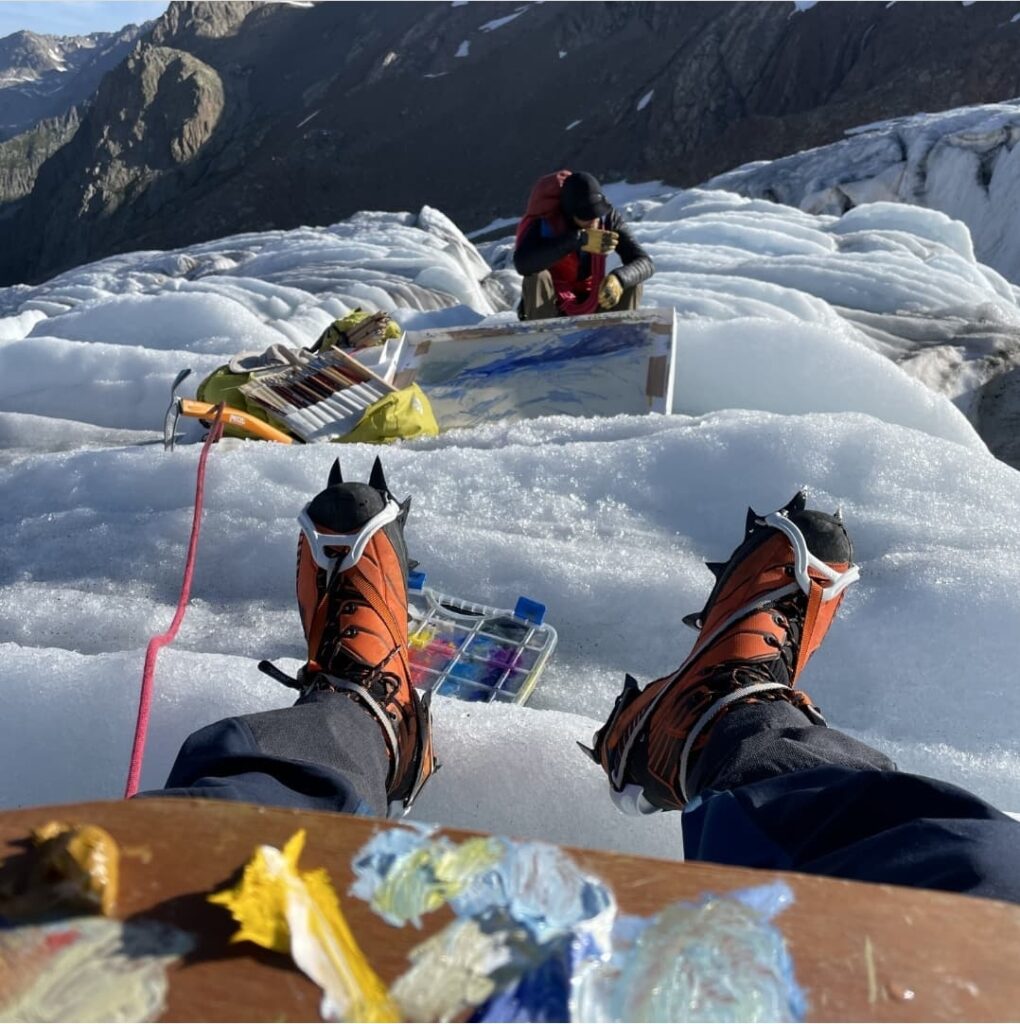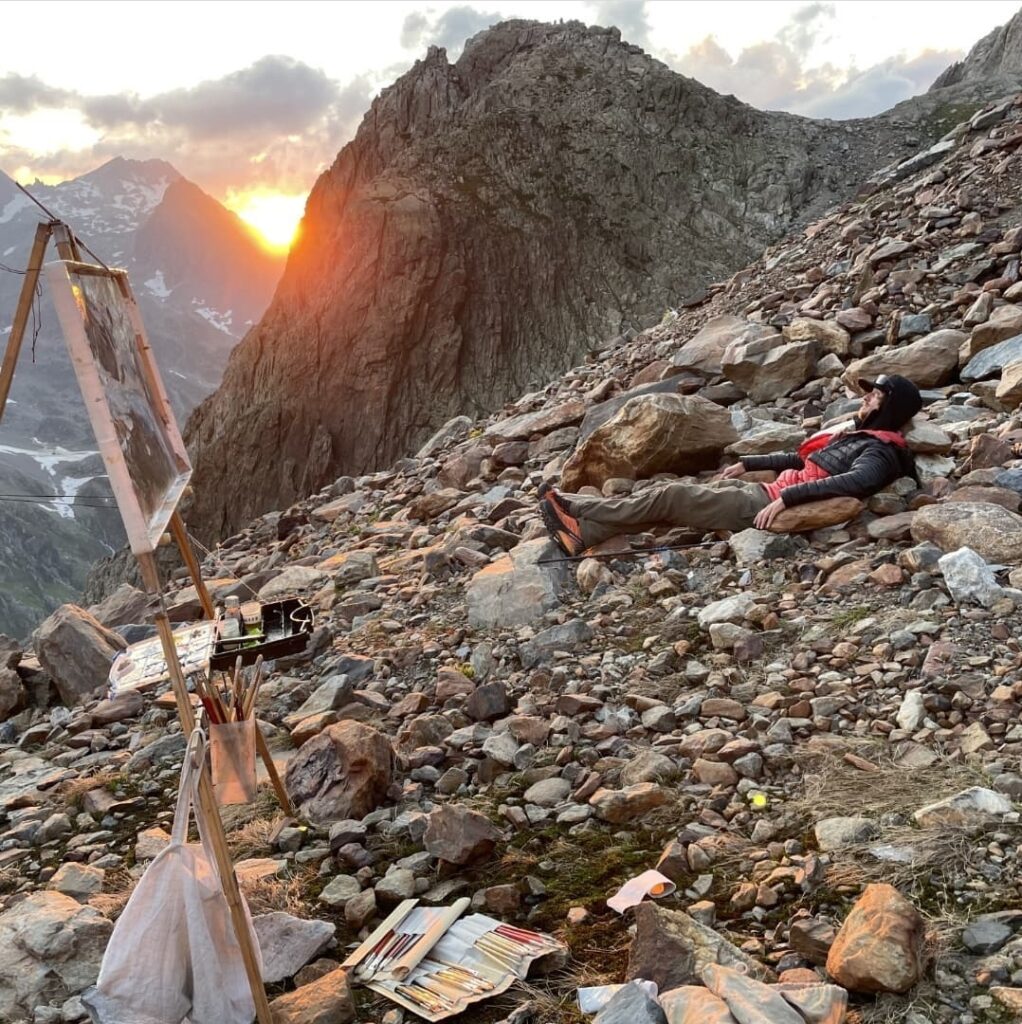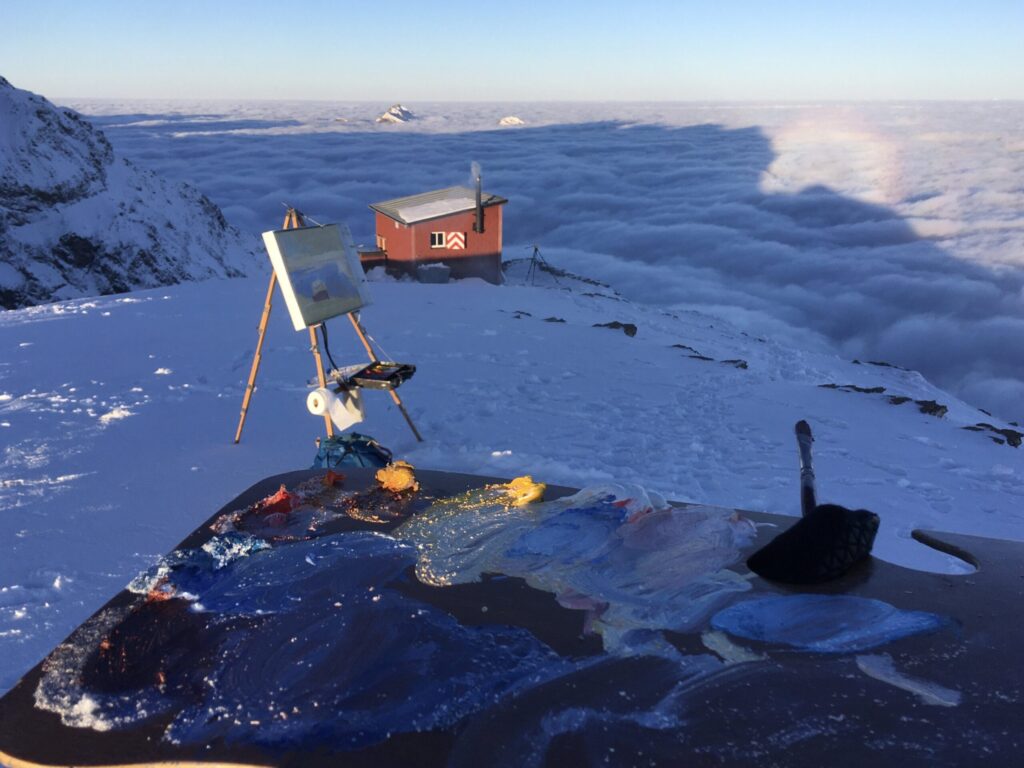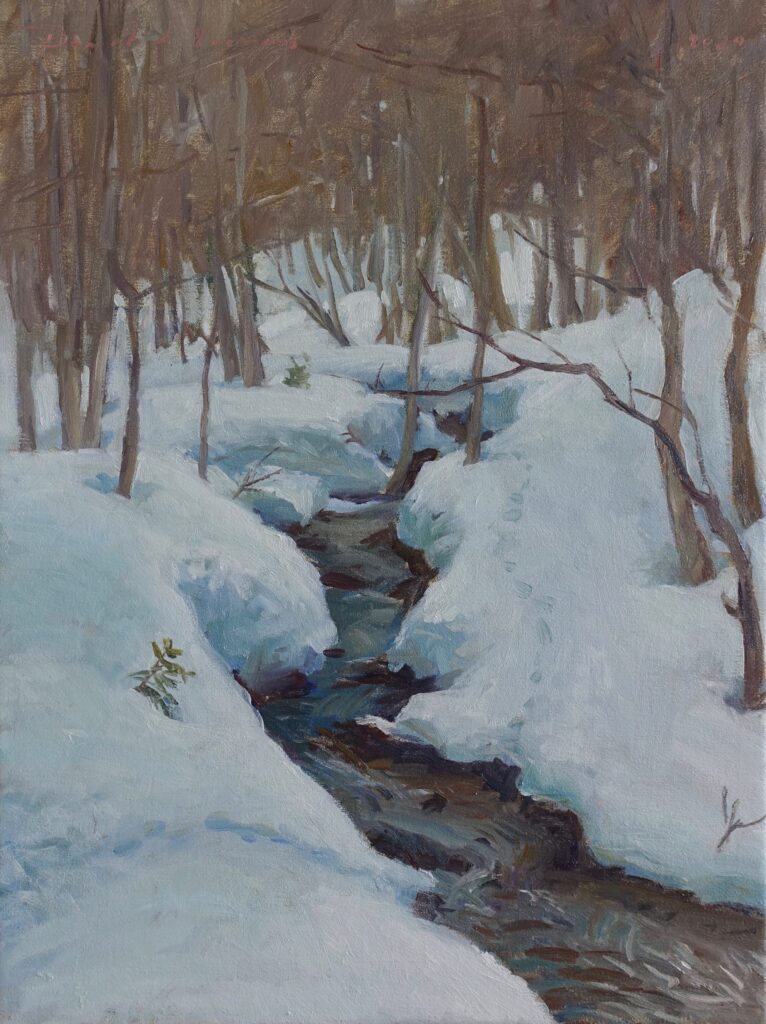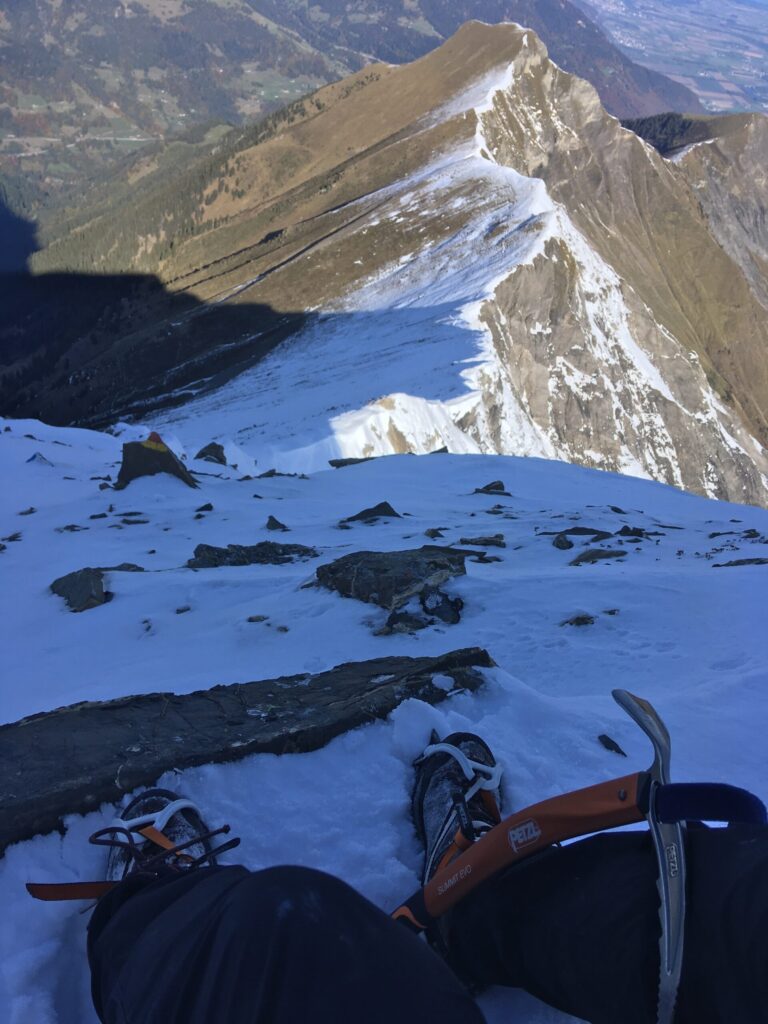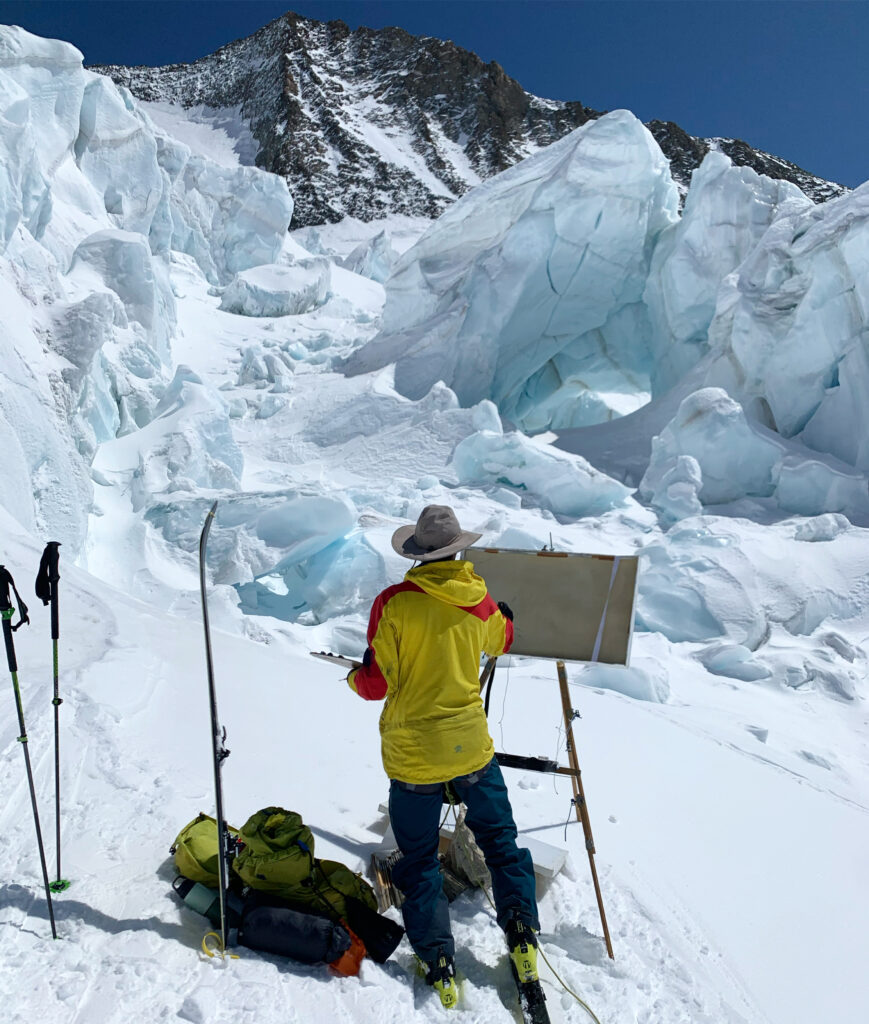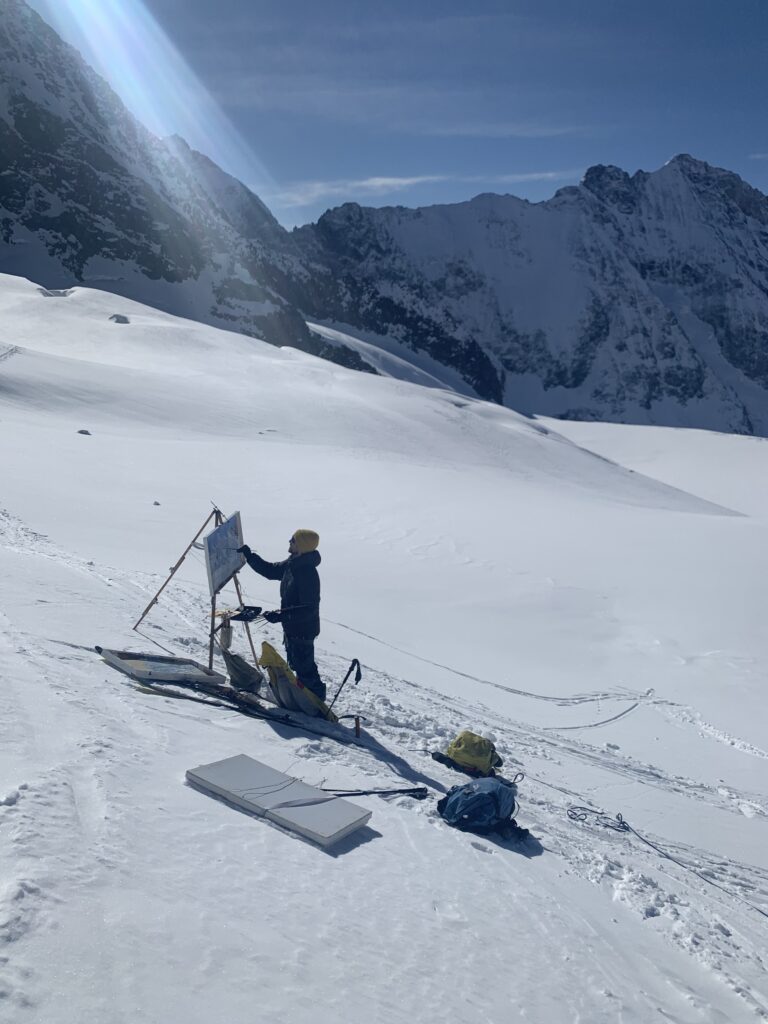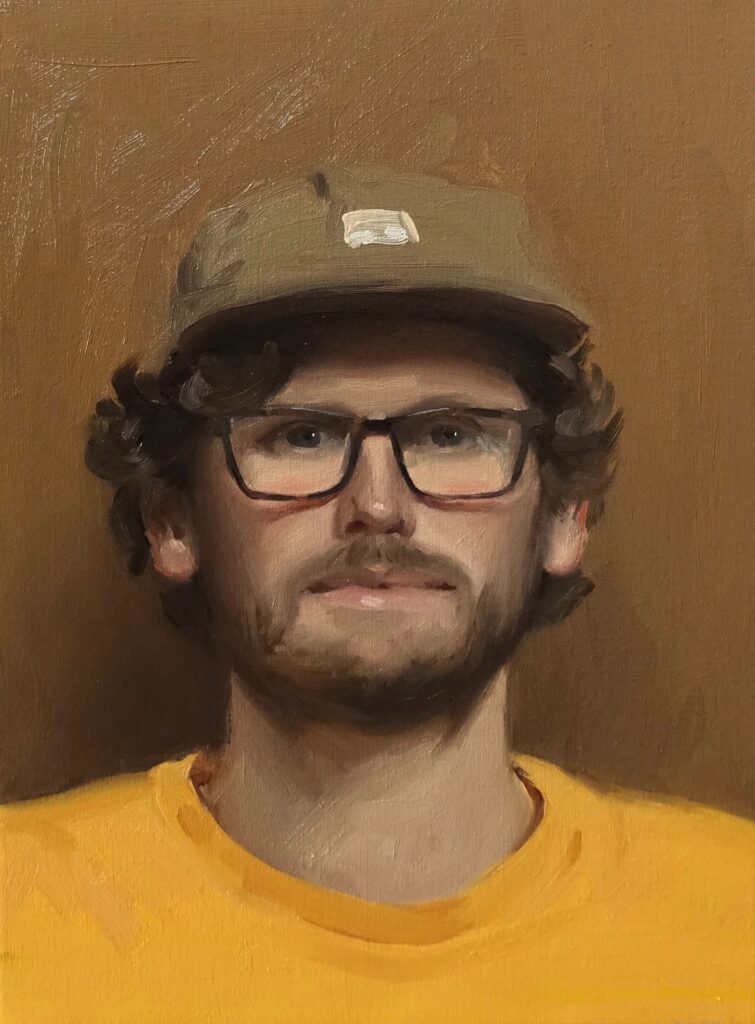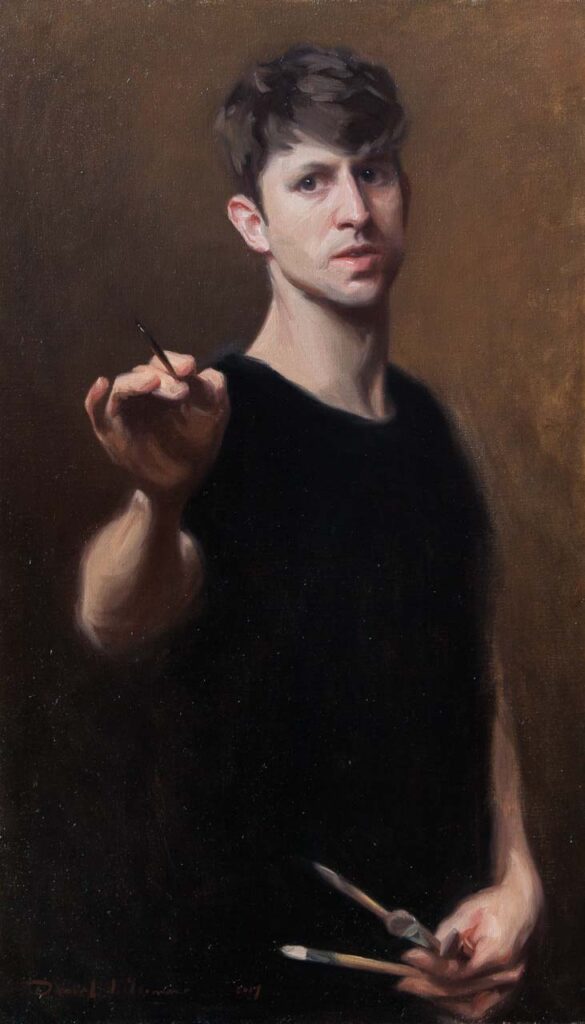Daniel J. Yeomans was born in Bedford 1986, and spent his childhood living just below the Malvern hills, where he was nearly always to be found with a pencil in his hand. It was here that his love for nature and the outdoors, it also his love of art began.
web site: danieljamesyeomans.com
instagram: @danieljamesyeomans
– You create different artworks. What subjects inspire you most of all?
– I like the variety I suppose. Usually, if I spend a long time in the studio I want to go plein air painting again, and visa-versa. For me the landscape enables some wonderful adventure and exploration whilst the studio is a space I feel more creative in and like to test out new figure or portrait ideas.
– I have seen some videos about extreme plein air, for example, some mountain plein air with you using the climbing equipment. It’s impressive. Is it your usual plein air or something extraordinary?
– I usually go on these trips 1-2 times a year.
Over the past year, I have been trying to make the painting equipment as light as possible and figure out what I really need and what I can leave at home.
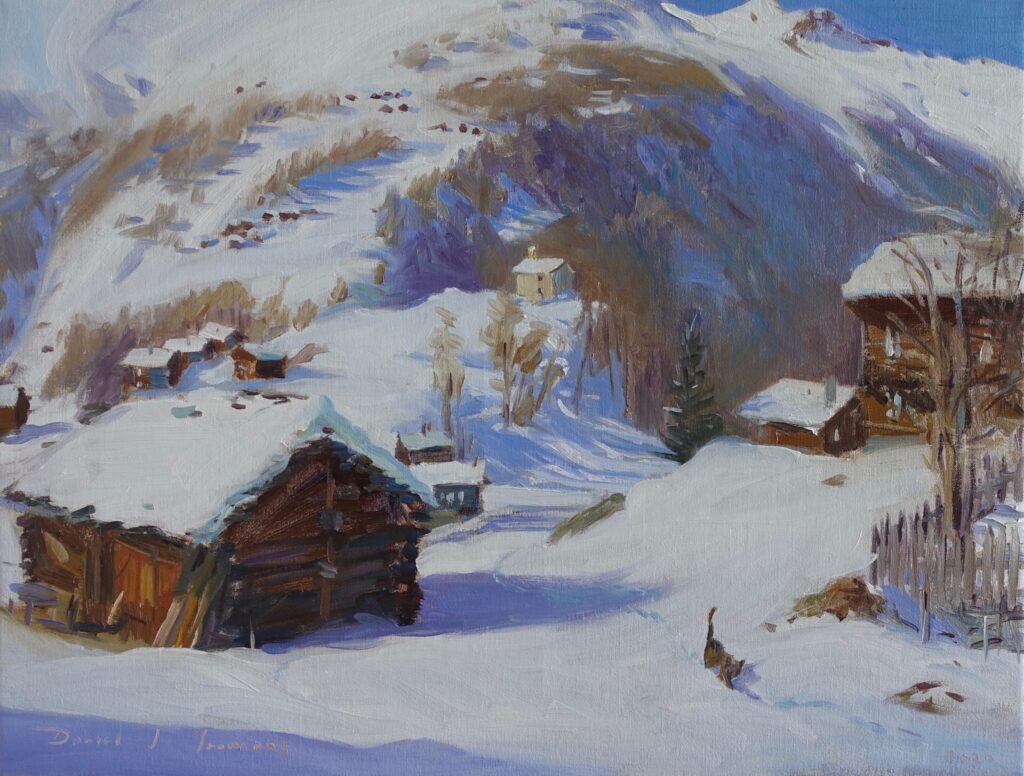
The easel I use if I’m hiking or ski touring is home-made, relatively light and folds up flat so it packs on my backpack. I use a typical plastic tool box re-hashed as a paint storage place. And something to pose my medium on. The big weight save is fixing canvas directly to a light plastic box which enables me to transport 2 wet paintings on my back. Lastly, I have a home-made palette to fit the size of my backpack. The rest, is whatever mountain gear I need for that trip.
– Could you share your own plein air hacks? What do you usually use in these extremе conditions?
– I have a brilliant ‘Mountain equipment’ jacket I bought from Scotland that keeps me warm when it is really freezing cold. That has saved me a few times.
If I’m painting by the sea I take a tent peg and string in case it’s really windy. If I’m on the snow skis jammed upright in the snow against your easel can be useful to stop your things moving around . What else…..Be prepared to get paint on all your outdoor climbing clothes too!
– Do you prefer going to plein air alone or with a company? Is it difficult to find a team of passionate, who shares your interests?
– I don’t mind either way, actually I really enjoy painting trips with other people but most the time I am alone. Sometimes I have my friend who is a mountain guide come along. We are great friends and it’s a good laugh.
– What is the most unusual and memorable place, where you were painting?
– I tried a full moon painting in Silvaplana (ch) in the middle of winter. It was -20 degrees Celsius. My friend who had commissioned the painting slept in the car in a sleeping bag with the lights and heating on and the boot open whilst I tried to paint outside. We stayed there most of the night but it was far too cold, my oil paints were too frozen stiff to paint with and it was generally a painting disaster in the end.
The most amazing has to be on the Aletsch glacier this winter. To be up close and amongst the crevasses and hear them creaking around you.
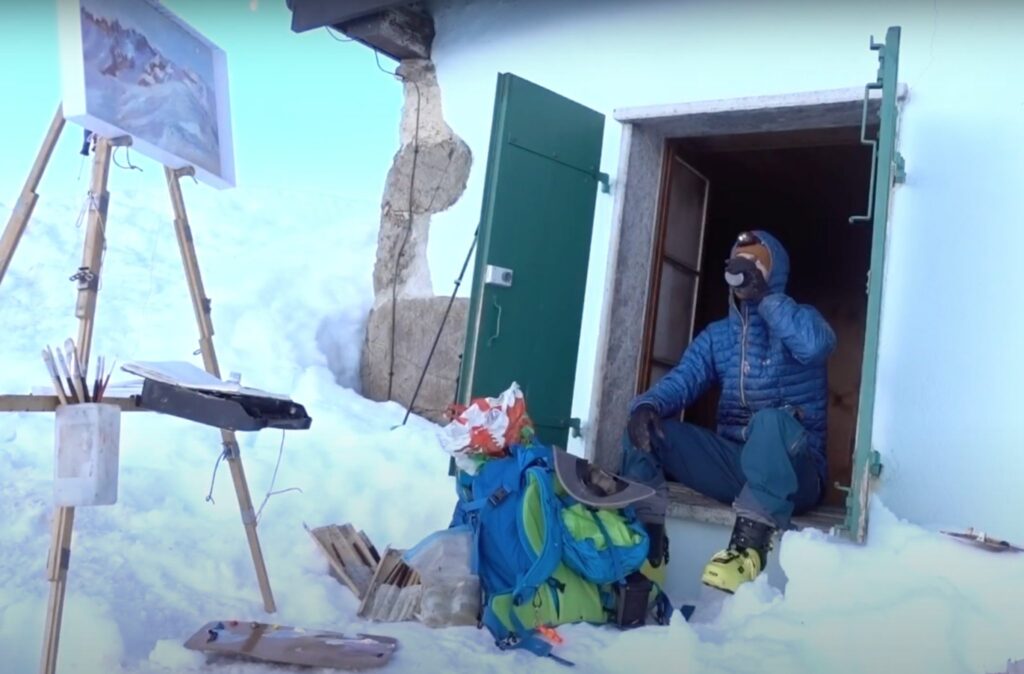
– Were there any unusual or funny cases at plein air?
– Just silly things really, like falling in streams under the snow in winter, that kind of thing happens quite a lot
– Do you usually work with your outdoor artworks at the studio? How often do you make a big work based on sketches?
– I very rarely make large work from studies, mainly because I enjoy painting outside more. Although I am experimenting with using lots of different plein air studies to make a large painting. Obviously the larger you go outdoors, the more the weather becomes a factor to deal with and can frustrating over a long period if it doesn’t go to plan.
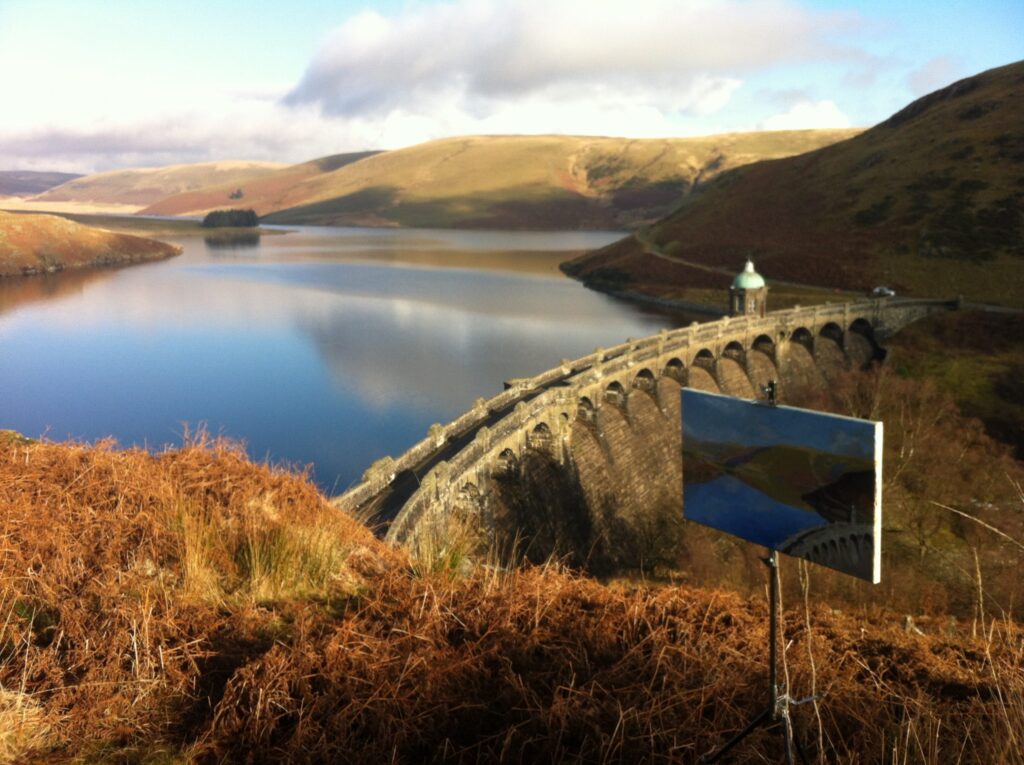
– Which canvas sizes do you usually for plein air?
– My easy go to for a typical adventure is 50×80. If I don’t need to hike, ski tour or cycle I’ll take something bigger.
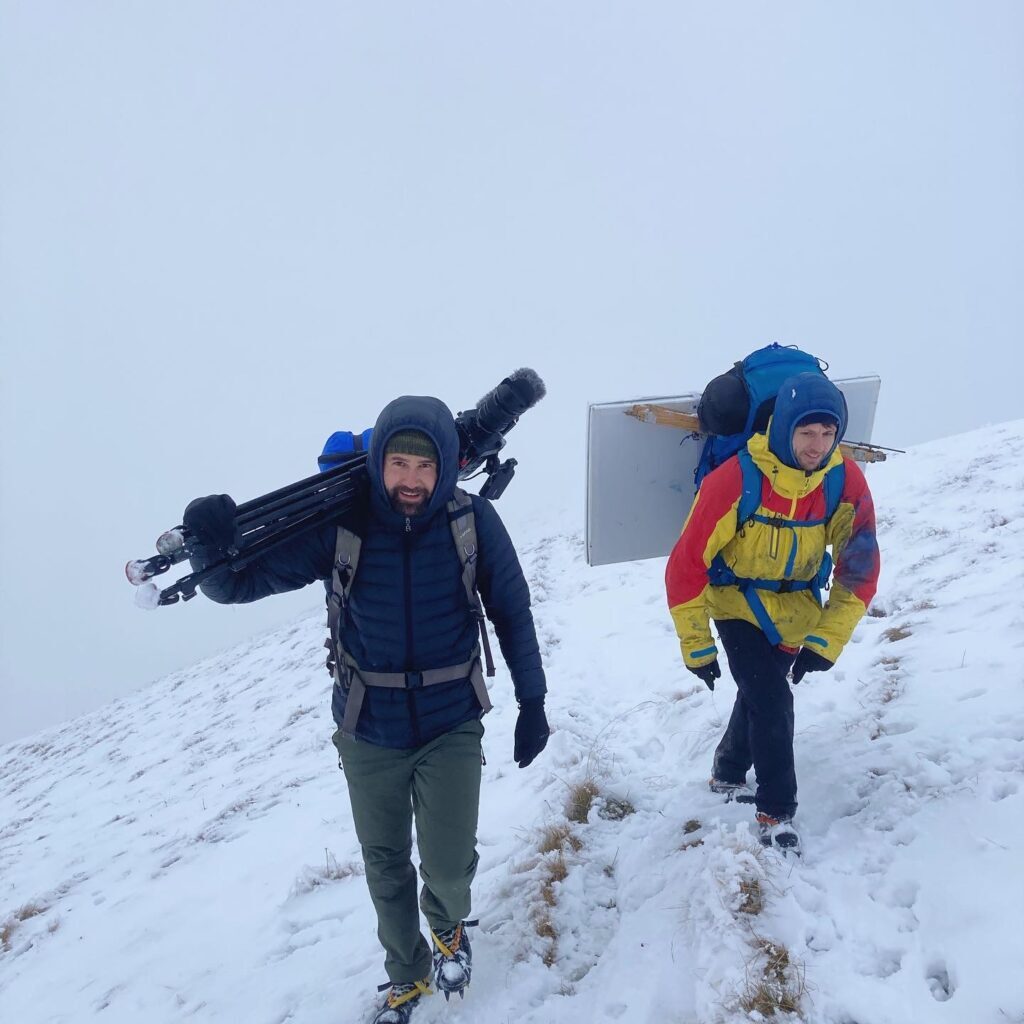
– Is there any project that’s you want to participate in? Maybe you want to illustrate a book or something else?
– At the moment I’m interested in doing some sculpture and some installations in the future, not quite there just yet though.

– Can you please share your rules that help you with outdoor painting.
– Well, I have one rule for myself that is I don’t continue on a painting if after 2 sessions it doesn’t feel right. I rather start again than fiddle with composition lots. . What else… don’t forget your painting medium – that is really annoying. Oh, and don’t take both skis off whilst painting on a glacier. This will reduce risk of falling in a crevasse! 🙂

